Typesetting
and paste-up, 1970 style
(Photos by Dan Wybrant)
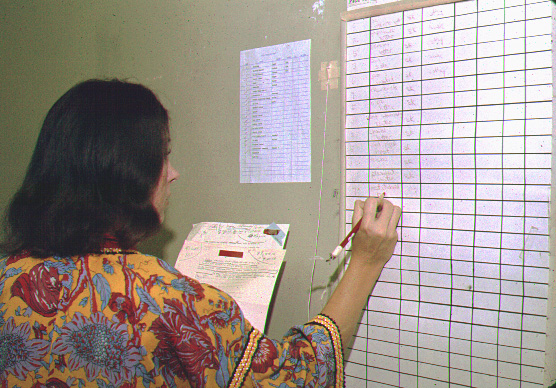
When an edited story arrives in the typesetting room, a typesetter
logs it in, noting essential details.
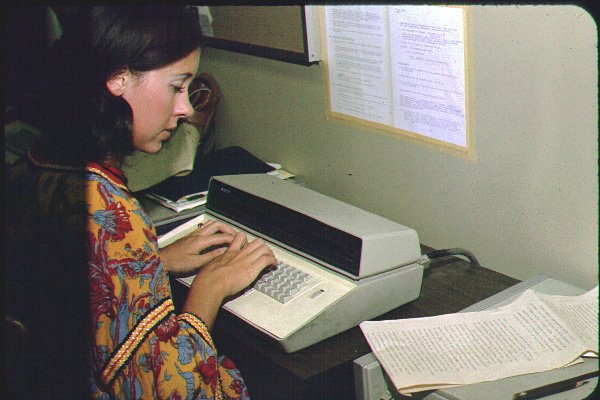
Then the story is typed on a Friden Tape Punch keyboard. The typist
must type "blind:" there is no video display. The machine perforates
paper tape, making one to six holes in the tape for each letter typed.
A typist can correct errors only by striking a key to delete the last letter
typed (the machine then punches all six holes, a code that means the previous
letter is to be ignored). Typesetters who could produce clean copy
on this system were miracle workers!
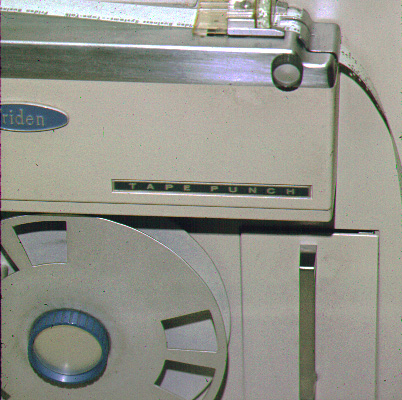
This is the heart of the Friden tape punch system.
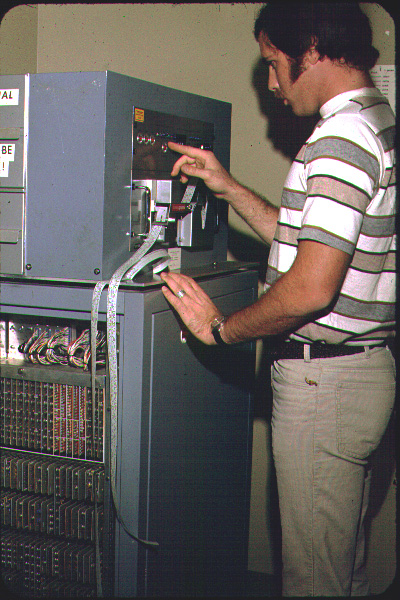
Next, a typesetting machine operator, Phil Kunisch, runs the tape through
a Compugraphic 2961 phototypesetter, which reads the tape and uses a strobe
behind a rotating film strip (one size, one type style per film strip)
to expose light-sensitive paper. A nice single-family home
near the campus could be purchased for the price of three Compugraphic
2961s--and this was a very low-end typesetting machine.
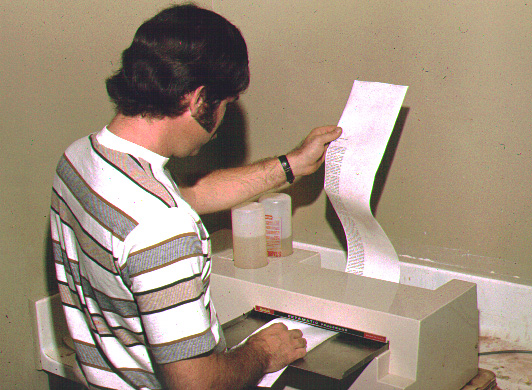
The exposed photo paper is developed in a chemical processing machine
to produce galleys.
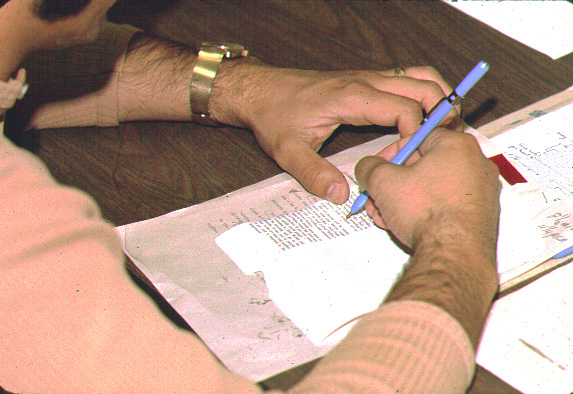
The galleys are then proofread against the original copy...
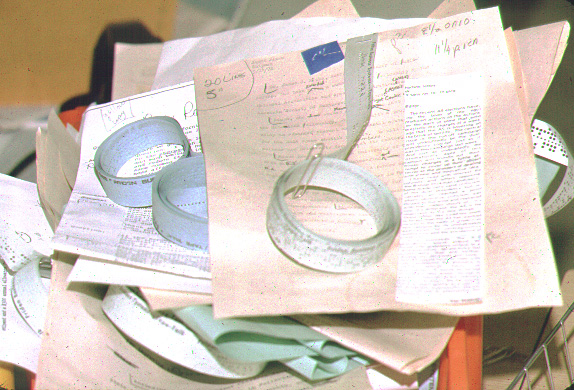
...and corrections pile up, awaiting the typesetter.
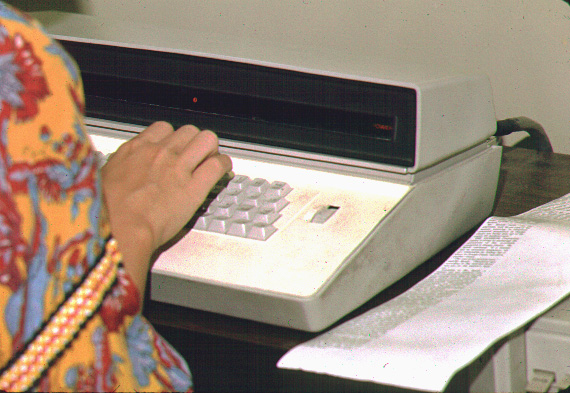
The typesetter retypes the lines or paragraphs containing errors.
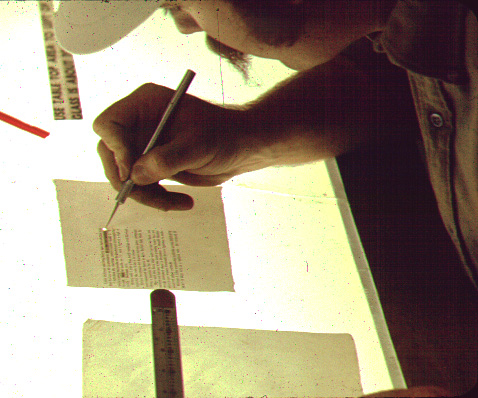
The corrections are pasted into the story with an X-Acto knife, sometimes
by the editor in chief (Ken Trust). Did the corrections ever fall
off the page? Naaaww!
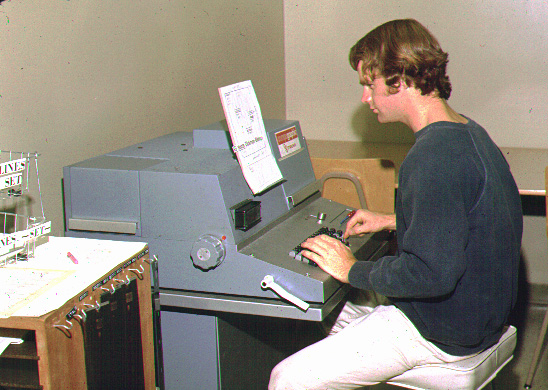
Someone--in this case managing editor Jim Benson--types the headlines on
a Compugraphic 7200 headline machine. It, too, used a type font on film
behind a strobe to expose photo paper The strips of photo paper, which were
about an inch wide and could be six feet long or more, were developed in
the chemical processing machine (unless they got tangled up along the way).
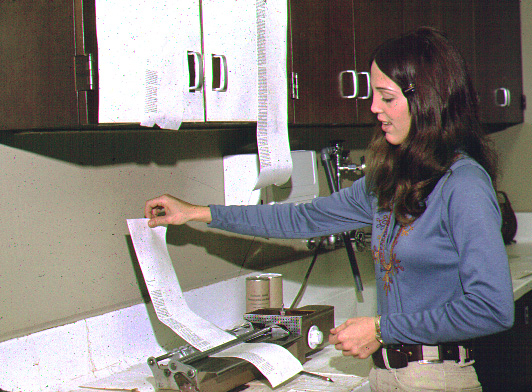
Nedra Bauer runs the typeset galley through the venerable wax machine (you
thought the Daily Titan used glue to secure typeset copy
to the pages???).
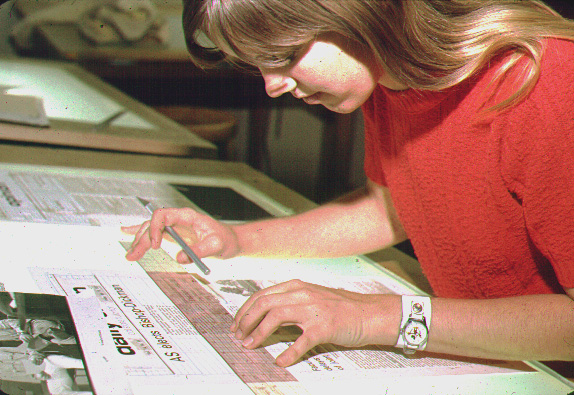
Finally, Jan Rodger does the tedious paste-up process, placing each story,
headline or pre-scanned photograph on the page as specified on the page
dummy. Every element must be perfectly straight and spaced
properly. Today everything Jan is doing here (and everything else shown
on this web page) can be done easily and quickly with desktop publishing
software and an inexpensive home computer--this process is primitive
by today's standards. Many campus newspapers have been fully paginated
(produced entirely by computer with no paste-up) since the late 1980s.
Next: a commercial shop does the offset
printing.
OR
Return to Daily Titan history opening page
|